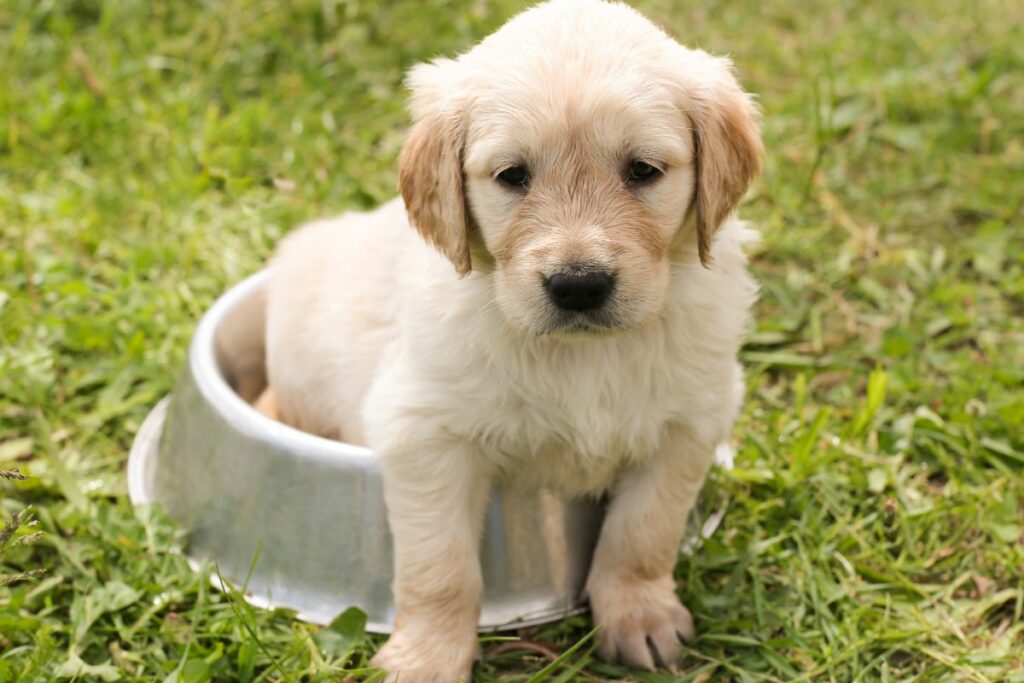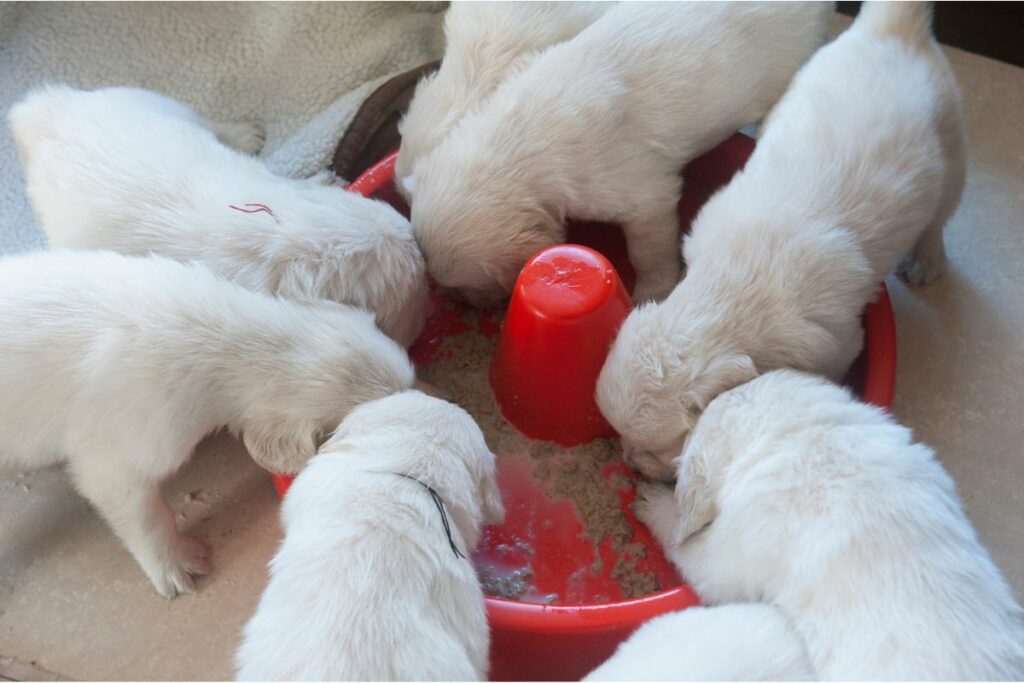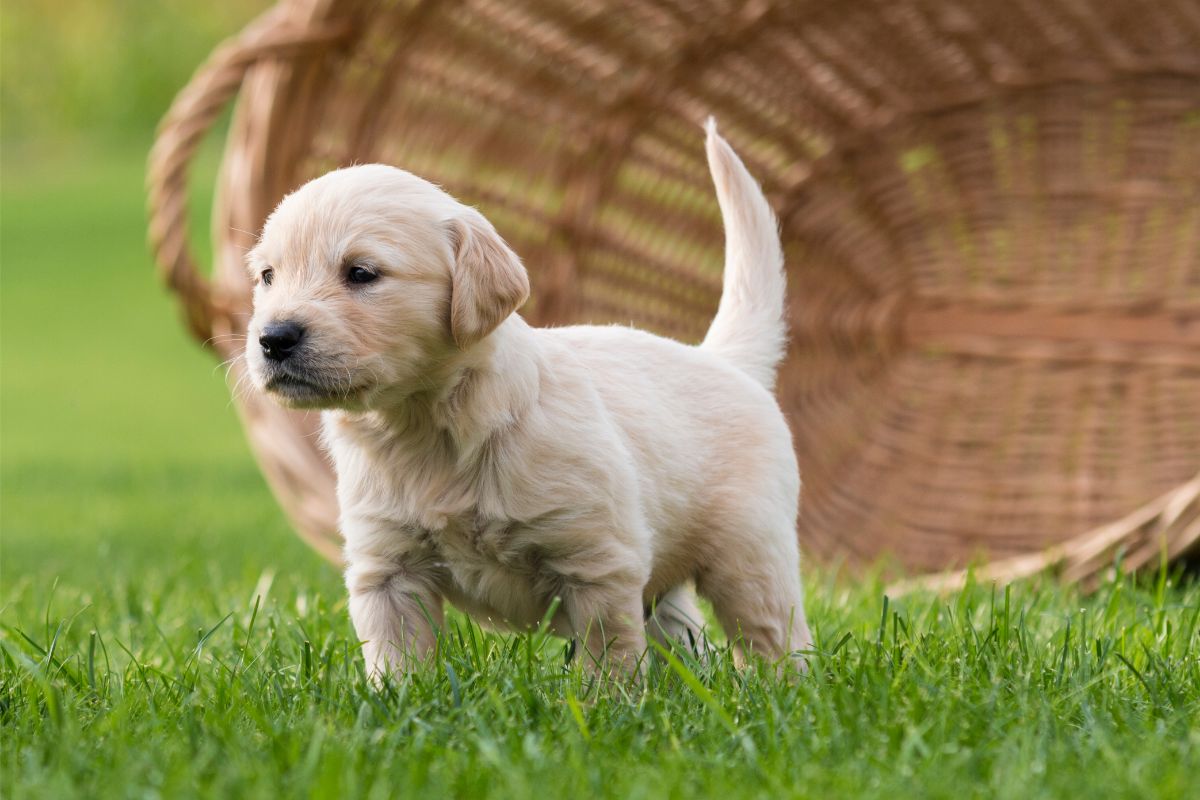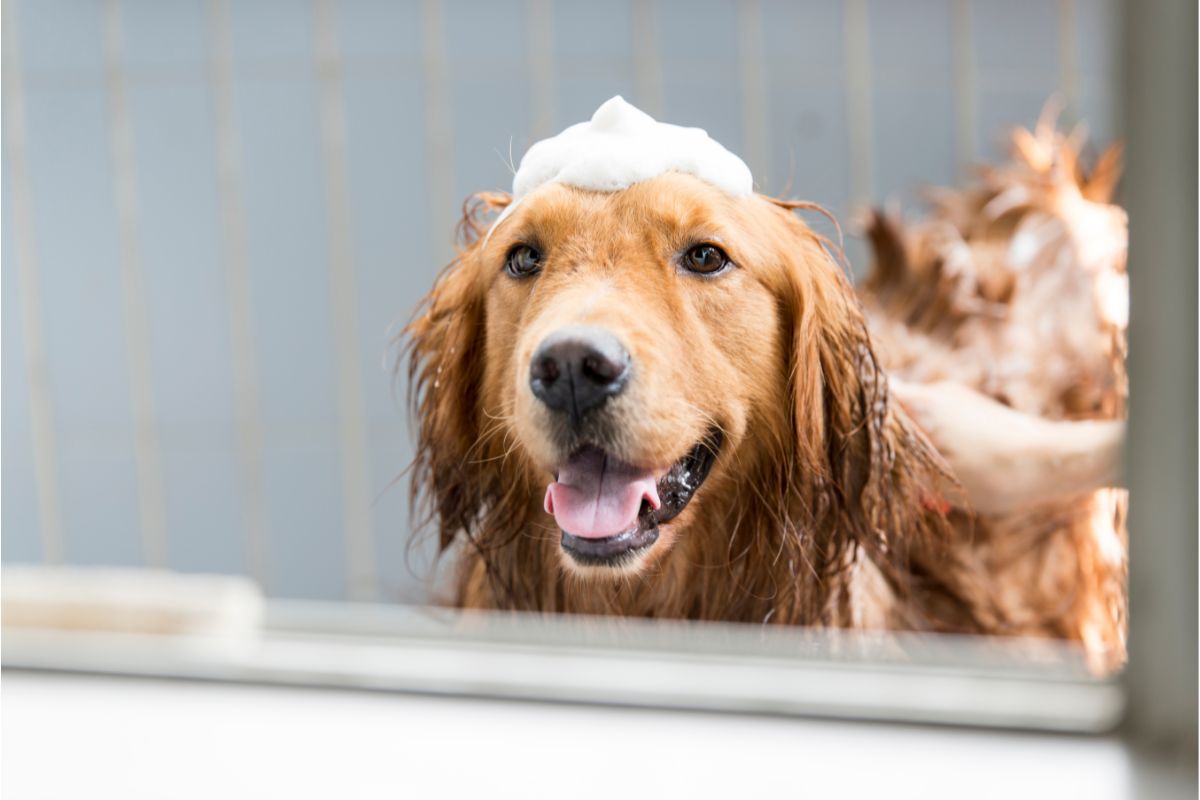So you’ve successfully managed to keep your pups thriving from their mother’s milk, but now your pups are between 3 and 7 weeks, and you are hoping to start the weaning process.
As with all parts of keeping your pups happy and healthy, being equipped with more knowledge about what you’re about to get yourself into is always helpful!
Let’s start by learning a little more about weaning.

What Is Weaning?
Weaning is a term that we use for both humans and animals.
It’s the process of moving young from using milk alone as the source of their dietary intake to other sources of food and drink, gradually introducing solids.
As the terms “process” and “gradually” suggest, this is not a sudden move from milk to solids.
It’s very important that a proper schedule is followed to ensure that the transition is successful.
What’s also important to understand is that this transition may look different from litter to litter and from pup to pup.
At What Age Should We Wean Pups?
Usually, it is recommended to start weaning puppies at between 3 and 7 weeks old. As with anything, this does depend on the size of the litter and the dog breed.
What are some signs that might indicate it’s time to start weaning in that case?
Well, you may notice that the pups start to seem intrigued by their mothers’ solid food – this is an ideal time to start, as it shows that developmentally, they are ready to begin eating solids.
Another alternative is that you may notice the mother starts to discourage the pups from nursing, so this is a reason that keeping an eye on pups and their mother while nursing is important, as this behavior from the mother can also indicate it is time to begin weaning.
We don’t want an unhappy mother!
Once you’ve noticed those cues, it’s time to get that kibble out and get those puppies exploring the wonderful world of food.
What Food Should I Start My Puppies On?
Ensure that you begin with dry puppy food (also known as kibble) that has been softened with either water or a puppy milk replacement.
Softening dry food is important, as not doing so can make it difficult for the puppy to eat and also digest.
This is very new to them, and it’s important to ease them in.
As a general guide, you want the consistency to be like oatmeal – maybe a little softer than the lumpy oatmeal grandma used to serve.
For this same reason, letting the pups explore the food is important. Try not to force it.
As with any animal and any developmental milestone, different puppies may be ready for the transition at different times.
Feel free to gently guide them and let them taste it for themselves, but it’s important not to push this and certainly not to reprimand them if they don’t eat what you expect them to.
Using a shallow dish is recommended as you want the pups to be able to easily access the food.

A General Puppy Weaning Schedule
As I mentioned above, weaning does need to be very individual to the litter and also then to each pup within it.
There isn’t a one-size-fits-all approach here.
That being said, having an idea of how to approach weaning and how you might expect it to go can be useful in moving through the stages.
You can generally expect weaning to take between 3 and 5 weeks.
Here is a handy pupping weaning schedule for you:
- Week 1 of weaning: Start to offer the softened puppy food in small portions to the pups. Let the pups explore and sniff this out. Feel free to place them in the vicinity of the food so that they get used to it without feeling forced onto it. However, at this point, make sure that the pups are still nursing from their mother.
- Week 2 of weaning: Gradually increase how often you are offering softened food. Whilst increasing this, reduce how often the pups can access their mother for nursing. Make sure to keep an eye on them to make sure that they’re well nourished and gaining weight as would be expected.
- Week 3 of weaning: Gradually reduce the amount of water or puppy milk replacer that you are mixing with the food to soften it. The aim of this is to keep the food soft, but the gradual change in consistency will make it easier when you begin to introduce the unsoftened food to their diet.
- Week 4 of weaning: Start to introduce dry kibble by mixing dry kibble with the softened kibble. During this week, start to increase the amount of dry kibble and reduce the amount of softened kibble.
- Week 5 of weaning: From the increase of dry kibble the previous week, your pups are likely now transitioned to puppy kibble without it needing to be softened. Make sure you continue to keep an eye out to make sure they’re getting enough nutrition and gaining weight.
With the above schedule, keep an eye on all the puppies in the litter.
If you find that one puppy is struggling a little more with their weaning, pay close attention. Every pup has different needs, and you want to make sure that all puppies in the litter are receiving the nutrition that they need.
Frequently Asked Questions
Puppies are usually fully weaned by about 8 weeks of age.
The best way to wean puppies is to gradually introduce solid food over a period of several weeks while decreasing their dependence on their mother’s milk.
Yes, puppies should have access to fresh water at all times, including when they are weaning.
Weaning puppies are typically fed four times a day.
The Final Woof
As with many aspects of pup and doggy care, it’s important to speak with your veterinarian.
It’s especially valuable to do this if you are aware of any of your puppies having different health needs from the others, as your veterinarian will want to offer support and may suggest a different route to weaning.
Keeping up with your veterinarian appointments will help you make sure all pups are on track with their weight gain and nutritional intake, and will also help you feel more supported if you encounter any difficulties with mom or pups during the weaning process.
Remember, it is a process, and weaning the litter takes time, but you’ve got this.








